Few traditional wine regions in the world can avoid something of a sneer when contemplating those with new money and no history who set up shop and begin to make wine.
Few things are more desperately difficult than avoiding local scorn when moving into a traditional wine region with new money and no history. The wine world is littered with vanity projects buried under a pile of derision mixed with a healthy dose of failed hubris.
For every half dozen examples of such projects, there is one that quickly distinguishes itself as more than just the passing fancy of someone with more money than they know what to do with.
When the Barta family moved into the town of Mád and purchased a steep overgrown hillside just outside of town, eyebrows were no doubt raised in speculation about what this wealthy industrial family with no history in viticulture was up to.
Five years later, by the time the family had meticulously cleared the land, rebuilt centuries-old stone terraces, and replanted one of the most storied vineyards in the history of Tokaj, not to mention beautifully remodeling an old cellar they purchased in town, Barta Pince was not just a fixture of Mád, they were one of the most interesting and ambitious new producers to arise in Tokaj in recent memory.
You see, the Barta family didn’t just buy any vineyard they bought the King’s vineyard.

First mentioned by name in 1285, the Király-hegy (King hill), a large domelike hill to the east of Mád was capped by both the royal forest and on its lower slopes, plantings of grapes. By 1664, the first surviving reference to the specific vineyard itself, the steepest slopes of the hill had been terraced and planted, and were being farmed by the Rákóczi family, rulers of what was then known as Transylvania.

Cut back into the forest at the crest of an old volcano, the vineyard that has been known as Öreg Király (Old King) was worked pretty much continuously until the communists decided in 1960 that the clay under the hill was more valuable and easier to extract than the sunny blend of Furmint and Harslevelu that flavors this corner of the wine world. This despite the fact that Öreg Király had been declared one of the top vineyard sites in Hungary as far back as the region’s 1737 classification, making it (as are many of Tokaj’s top vineyards) one of the world’s oldest grand crus.

Luckily, local authorities situated the Mád kaolin mine on the west side of the Király hill, leaving the terraces and old vines of Öreg Király to be overtaken by the spreading black locust trees and bramble, a royal treasure waiting for someone ambitious enough to reclaim it.
Standing at the top of Öreg Király with the world spread out below glinting with the emerald of spring feels pretty regal, I have to admit. Looming high above some of Tokaj’s most well known vineyards, I can’t decide which is more impressive, the view, or what it must take to farm these steep terraced hillsides of brown, orange, and white stone.
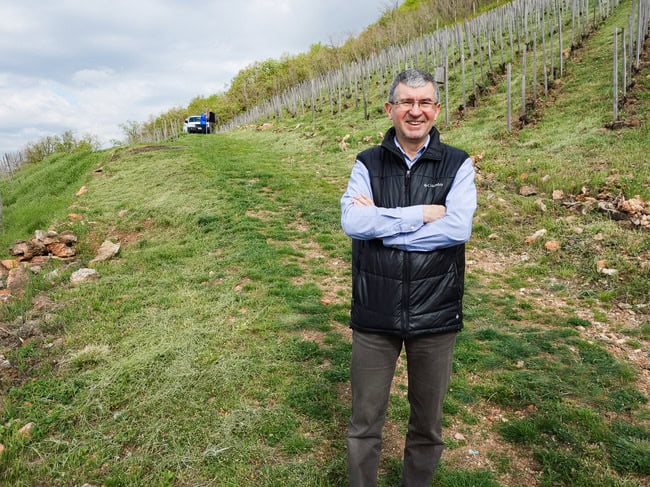
Károly Barta stands with me at the apex of his family’s 25 acres of vineyards and doesn’t need to marshall many facts to convince me that this is the highest elevation, steepest hillside planted in Tokaj, nor does he need to do more than hand me a baseball sized nodule of rhyolite known locally as a “monkey brain” to convince me how close to the primary rock these organically farmed vines really are.
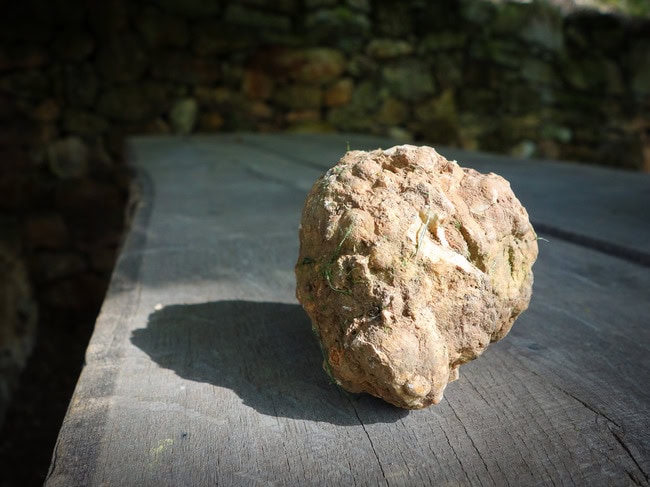
After the difficulties posed by the slope, the biggest problem the family has in the vineyard, says Barta, are the wild boars. “They harvested three hectares for us last year,” says Barta with a somewhat wry grin as he pours me a glass of Öreg Király Furmint. This doesn’t come as a big surprise to me having just tramped through the forest that surrounds the top of the vineyard on three sides.
While that may be bad news, Barta says “the same forest hosts raptors that protect us against the starlings, which can also be a major problem.”
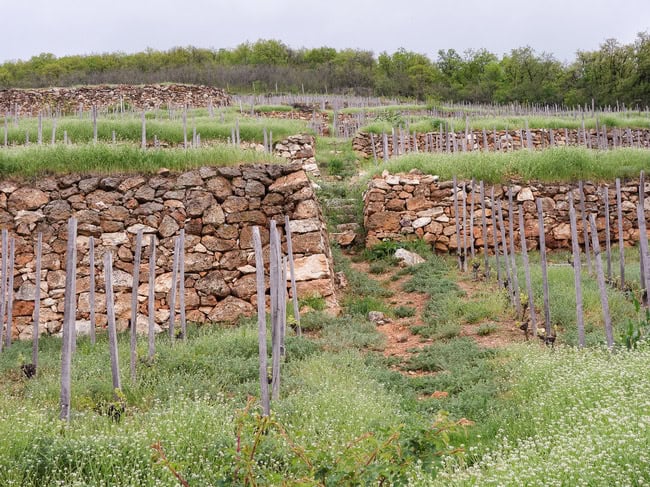
After the herculean task of rehabilitating the old vineyard, dealing with the local wildlife probably seems like small potatoes to a guy who seems to relish doing things the hard way. Case in point? “I hope that one day we’ll even be able to age our wines in oak from this hill,” he says, patting a knotty trunk next to where we stand.
As with all press visits, this one has been engineered to impress, but it didn’t require much effort. Just managing to drive up to the base of the vineyard left me awestruck, as Barta managed to maneuver around washed out sections of road that threatened to eat his dusty sedan whole.
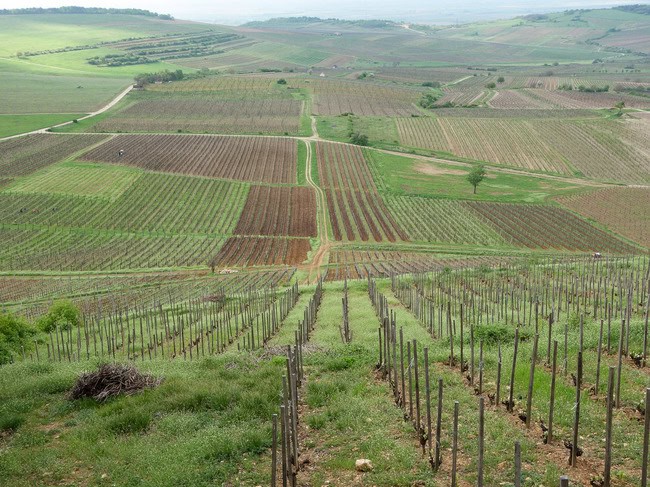
Later that day, as we speak about the particulars of the estate’s several wines, Barta sums up the family’s point of view on their new wine efforts quite succinctly. “We want to do something different,” he says. “What is the point of being another Szepsy or something like that,” he asks, referring to the region’s most famous small family estate.
It’s hard to imagine anyone objecting to somehow being the equivalent of the guy who almost singlehandedly put Hungary back on the world’s wine radar, but still I understand where Barta is coming from. The choices Barta and his family have made from day one have been geared at both quality and distinctiveness. Among their better decisions, in my opinion, was the hiring of Attila Homonna, a young winemaker who was just beginning his own small wine project, but had trained with one of the best consultants in the region.
“We were looking for a winemaker with a unique style,” says Barta. “We wanted quality first, but then we wanted a unique style, someone who could do lower alcohol, higher acidity wines with great fruit, and good aging potential.”
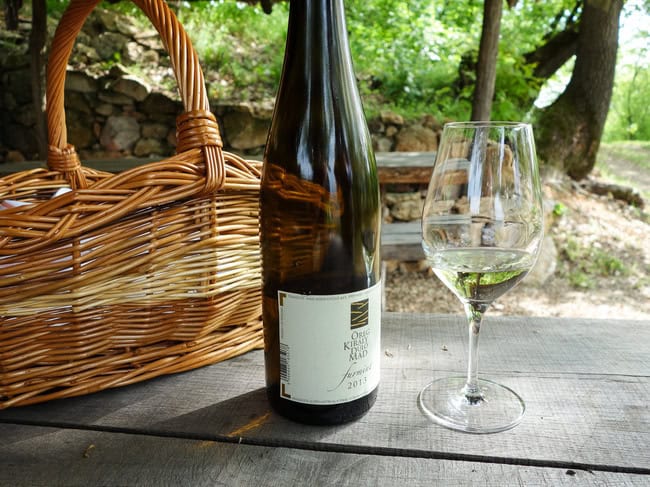
I tasted Homonna’s first vintage of dry Furmint several years back at Austria’s Vie Vinum event and was hugely impressed, and didn’t realize he was the winemaker for Barta until shortly before my arrival in Tokaj. It was with high hopes, then, that I tasted the Barta wines, and I didn’t come away disappointed.
The winemaking regimen under Homonna is fairly straightforward and about as non-interventionalist as you get in Tokaj for their small production of around 20,000 bottles. The grapes are farmed strictly without herbicides, pesticides, or chemical fertilizers, and like all grapes in the region, receive no irrigation. They are hand picked in several passes over several weeks, beginning with the clean grapes that will make the crisp, pear-inflected dry Furmint wines, followed by the golden berries that will make the sweeter late harvest wines, and finally the shriveled berries infected with botrytis, or noble rot, that will become the prized Aszu sweet wine that has made Tokaj world famous for centuries.
The grapes are gently pressed and matured in 500 liter oak casks in the subterranean, 16th century cellar dug out of the rock beneath the winery’s charmingly wild garden, its presence only hinted at by the small headstone-like protrusions of air vents every once in a while.
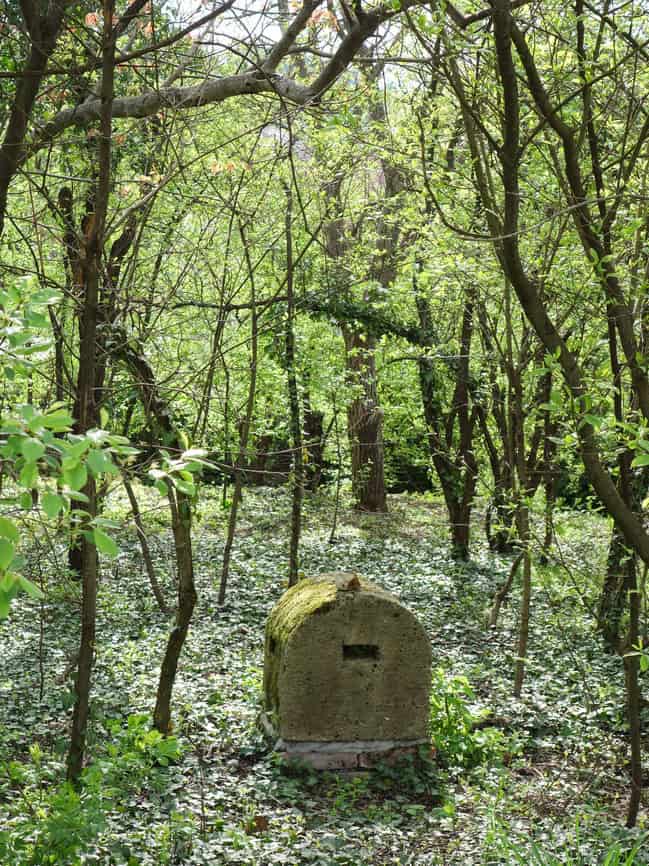
From their choice of vineyards, to their choice of winemaker, the Barta family seems to be doing everything right, and investing for the long haul. They even quickly became part of the Mád Circle, a group of 14 winemakers who desire to hold themselves to even stricter quality standards than the government requires. Barta himself now holds the role of Vice President of the organization. This is an estate to watch closely, as I believe they are headed for great things.
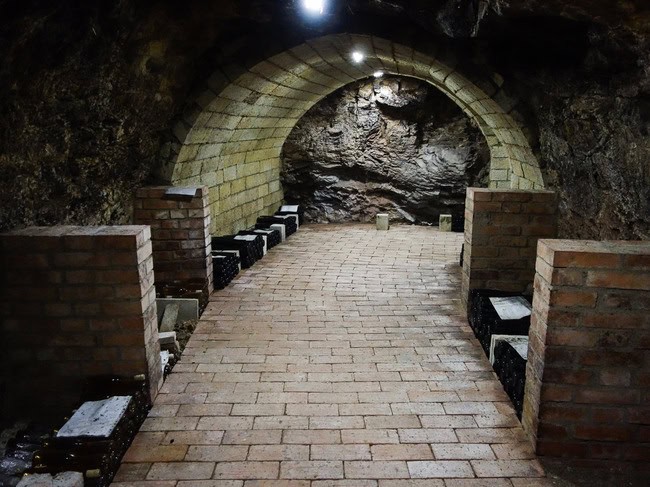
As we walk through the cellar and then back out again to where the stainless steel tanks sit, Barta asks me if I’m interested in a treat. I learned long ago the only answer to such questions is a quick “yes.” A small silver tank about five times the size of a large fire extinguisher is opened up to reveal the tiny quantity last vintage’s Eszencia, the precious ambrosia squeezed from 100% botrytized berries that will take sometimes up to 8 years to finish fermenting to mere single-digit alcohol levels.
A spoonful is all I needed to feel like a king.

TASTING NOTES:
Unfortunately, only the basic dry Furmint (and a tiny bit of the moderately sweet Szamorodoni – made from mostly botryitized bunches) is regularly available in the United States, but in particular if you find the 2013 vintage, snap it up. It’s great stuff.
2012 Barta Öreg Király Furmint, Tokaj, Hungary
Palest blonde in the glass, this wine smells of white flowers and pear and pear skin with a hint of wood. In the mouth, bright apple, pear, and lemon juice have a nice freshness in the mouth. Juicy fruit and nice acidity with a bit of creaminess pervade the wine. There’s a faint tannin that lingers chalkily in the finish. 13.38% alcohol. Score: between 8.5 and 9. Cost: $38. click to buy.
2013 Barta Öreg Király Furmint, Tokaj, Hungary
Palest blonde in the glass, this wine smells of wet chalkboard, white flowers, and Asian pear. In the mouth gorgeously bright Asian pear, white flowers and citrus pith flavors have a super juicy aspect to them. There’s a faint sweetness to the wine (8 g/l) but the acidity level makes the wine taste nearly dry. Fantastic bright stony acidity makes for a long finish. 13.4% alcohol. Score: around 9.
2013 Barta Öreg Király “Selection” Furmint, Tokaj, Hungary
Pale gold in the glass, this wine smells of wet chalkboard and pear skin. In the mouth the wine has a wonderful deep minerality with lemon and grapefruit pith floating over rainwater and a hint of Asian pear. Super juicy and delicious. Made from a selection of grapes from the upper eastern part of the hill, where it is very steep and terraced surrounded by the forest on three sides. 13.12% alcohol. 200 bottles made Score: around 9.
2011 Barta Öreg Király Furmint, Tokaj, Hungary
Light blonde in the color, this wine smells of struck flint and Asian pear. In the mouth, Asian pear flavors are bright and juicy with lemonade and grapefruit pith layered over wet stone minerality that is quite delicious. Fantastic acid balance and now a hint of saline on the finish that begs for another sip. 13.78% alcohol. Score: between 9 and 9.5.

2010 Barta Öreg Király – Late Harvest Furmint, Tokaj, Hungary
Light gold in color, this wine smells of honey and white flowers. In the mouth, gorgeous apricot and peach flavors mix with a wonderful mineral backbone driven by fantastic acidity, which makes the wine taste only slightly sweet despite its heft 109 grams of residual sugar. This vintage was very rainy and therefore this wine contains a higher percentage of noble rot than would ordinarily be the case for a late harvest wine. 10% alcohol. Score: between 9 and 9.5.
2010 Barta Öreg Király – Sweet Szamorodoni Furmint, Tokaj, Hungary
Light gold in color, this wine smells of peach pie and candied apricots. In the mouth, bright peach and apricot flavors have a nice floral overtone and are backed by bright acidity. Wonderful clover honey flavors linger in the long finish. Moderately sweet 10.45% alcohol. Score: around 9.
2013 Barta Öreg Király – Sweet Szamorodoni Furmint, Tokaj, Hungary
Pale greenish gold in the glass, this wine smells of green apple, honey and white flowers. In the mouth, the wine is bright and stony with fantastic white flowers, clover honey, and apple crispness that makes it wonderfully lightweight in the mouth and effortless to drink. Moderately sweet. 11% alcohol. Score: between 9 and 9.5. Cost: $85.
2010 Barta Öreg Király – 6 Puttonyos Tokaji Aszu Furmint, Tokaj, Hungary
Medium gold in the glass, this wine smells of candied apricots, pineapple, honey, and butterscotch. In the mouth, phenomenal acidity makes flavors of apricots, peaches, and honey into fireworks on the palate. One sip and saliva glands go into overdrive as very sweet liquid sunshine pours across the palate. Dare you not to swallow. Fantastic, cloud-like silky texture and weight, with minutes long finish. 8.49% alcohol. 829 bottles made. Score: around 9.5.
2008 Barta Öreg Király – “Mobius” Furmint, Tokaj, Hungary
Medium gold in color, this wine smells of juniper and nut skin and the kind of tang you expect from sherry. In the mouth, lightly to moderately sweet flavors of apple skin, nuts, and gin linger through a vinery long finish. Exotic and category defying, this wine is too sweet to be a dry szamorodoni and not sweet enough to be a sweet szamorodoni. This wine fermented from 2008 until 2013, and no sulfites have been added. 15.71% alcohol. Score: between 8.5 and 9.
2010 Barta Öreg Király Sparkling Furmint, Tokaj, Hungary
Pale gold in the glass with medium bubbles, this traditional method sparkling wine smells of apples and pears. In the mouth, sour apple and pear flavors are delivered on a coarse mousse. Aged for 3 years on the lees before disgorgement. 12 g/l dosage. Score: around 8.
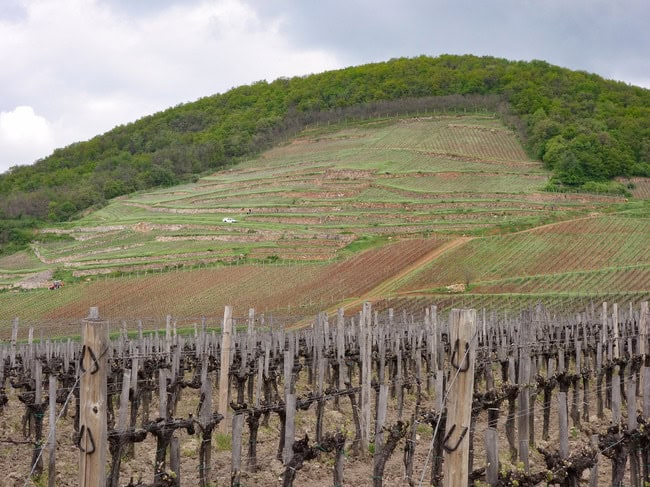
Image of vineyard map © copyright and courtesy of Barta Pince